The historic flooding that has shuttered the northern half of Yellowstone National Park, likely for the season, might have also put a damper on some serious fly fishing plans for anglers who come from far and wide to chase wild trout within the park.
UPDATE (JULY 1, 2002): The National Park Service has announced important updates to closures within Yellowstone National Park.
Rivers like the Gardner and the Lamar, as well as tributaries like Soda Butte and Slough creeks will very likely be off limits for the rest of 2022, as will the Yellowstone River itself as it flows north of Canyon Village to where it exits the park near Gardiner, Mont. A host of other smaller and wonderfully fishable creeks and streams will also remain closed to public access as the National Park Service deals with repairs and reconstruction throughout the rest of the year.
For trophy trout anglers, this spring’s record floods are, indeed, a blow.
But don’t despair. Yellowstone may be the beating heart of the regional fishery, but anglers willing to drive a bit more (and, yes, the gas prices are going to be brutal!) can still salvage their trip west.
Here are a few ideas:
The Yellowstone River north of Gardiner
For a time, it’s best to avoid the Yellowstone River between Gardiner and Livingston — the flood waters that originated in the nearby national park washed out homes, took out vehicles and generally wreaked havoc on the Paradise Valley community.
That said, the river will eventually come down, and by then, it’ll be time to start fishing. The Yellowstone through Paradise Valley has always been a dependable trout fishery. However, in recent years, it’s suffered from drought and high water temperatures during the peak of summer. It might be odd to suggest that you wait for flood waters to recede, and for residents to at least take a breath before you hit the river … only to find that the river might then be too warm to safely battle its trophy trout. Play it by ear and do your research. If you can hit it just right, the Yellowstone can change your life.
The Popa Agie, Wind and North Platte rivers
If you’re coming from the east or the south (from, say, Denver, or locations in the South or the lower Midwest, you’d likely drive by some of the best trout fisheries in the West on your way to Cooke City or Gardiner and the waters of the world’s first national park. Rivers like the Papo Agie (pronounced Puh-Poj-ia) and the Wind are renowned trout fisheries — and the communities of Lander and Riverton are great home bases for some quality fishing. Parts of both rivers are on the Wind River Indian Reservation, so you’ll need to make sure you have the appropriate licenses, as well as a Wyoming fishing license to partake.
Don’t forget the North Platte River that flows north from Colorado into Wyoming and through the city of Casper — this is a trophy trout fishery that a lot of folks overlook when they have rivers like the Lamar or the Yellowstone on their minds. It’s “on the way” to Yellowstone, too.
The Snake, Buffalo Fork and Jackson-area fisheries
Farther west, the Buffalo Fork flows out of Grand Teton National Park. It’s a large tributary to the Snake River and it can fish well in the summer, particularly if you’re a fan of native Yellowstone cutthroat trout and mountain whitefish. It’s easiest to access near the busy Moran Junction near Grand Teton National Park, but if you have a good Wyoming atlas, you can sleuth out a few other access points where traffic and other anglers won’t be such an issue.
The Snake flows out of Yellowstone National Park, leaving the southern edge of the park almost exactly at the south entrance. From there, it flows generally south into Jackson Lake. The tailwater section continues south below the dam at Jackson Lake, through Grand Teton National Park and the west of Jackson. From there, it enters the storied “canyon” stretch, where it picks up the Hoback River and then dumps into Palisades Reservoir, which straddles the border between Wyoming and Idaho. From top to bottom, the Snake can fish really well in the summer, but it blows out early thanks to runoff and often doesn’t clear up until the middle of July.
The Hoback, too, can be a great cutthroat trout fishery, but like the Snake, it’s susceptible to high water during runoff and whenever a high-elevation thunderstorm sends rainwater downstream. There are a number of tributaries along the Hoback that flow either all or partially on public lands, so a Wyoming license is really all you need to access them. Again, a good atlas will be a big help.
The Snake enters Palisades Reservoir from the east, but another notable river enters the lake from the south — the Salt River flows north through Star Valley and can be a great fishery. Access is tough, however, because most of it is on private land, and Wyoming’s river access laws prohibit anglers from accessing the river at road crossings and bridges, and it’s not even legal to touch the bottom of the river. There are a few public access points, though, and fishing can be stellar if you can get a spot to yourself. If you have a drift boat or a raft, you could be in for a great day on the water.
The South Fork, the Teton and Henry’s Fork
Below Palisades Reservoir, the Snake River magically becomes the South Fork of the Snake River as it flows through Swan Valley. This tailwater is one of the best dry-fly rivers in America, and it boasts dependable hatches all summer long that range from salmon flies around the first week of July to PMDs and clouds of caddisflies through summer. In the fall, it boasts epic Blue-winged Olive hatches, and it’s one of the best times of the year to chase big browns with streamers.
North of Swan Valley, over Pine Creek Pass, is the Teton River. This underappreciated river through basalt cliffs that slice through grain and potato fields and can be one of the best rivers in the West for anglers searching for native Yellowstone cutthroat trout. It’s not as easy to access as the South Fork, but several outfitters offer guided trips on the Teton — if you have the opportunity, do it. You won’t be sorry.
Still farther north, the storied Henry’s Fork bubbles up from Big Springs and begins its journey south through Island Park, over Mesa Falls and down into potato country near Ashton and St. Anthony. It picks up the Teton and finally meets the South Fork near the town of Menan.
The upper reaches of the Henry’s Fork are best described as technical water. It flows through some fabled landscapes, like Box Canyon and the Railroad Ranch. Here, anglers spend hours casting to a single rising fish, and hooking and landing one trout is often considered to be a good day. Farther downstream, as the river runs like more of a freestone stream, it is less technical. And, the fish in this lower reach are every bit as big as the trout in the upper sections — browns can stretch to tape to 26 inches and more.
The Bighorn
Below Yellowtail Dam, the Bighorn River becomes one of the most dependable tailwater fisheries in Montana. During the heat of summer, the trouty stretch of the river shrinks a bit, but it’s still worth a look as it flows through the cottonwood bottomlands of the Crow Indian Reservation. Here, big browns and rainbows lurk, and structure ranges from downed cottonwoods to old vintage cars tucked into the mud to shore up the river brank.
It’s a great streamer river in the spring and fall, and it’s a solid dry-fly river through summer. A lot of folks from points east drive right by it on their way to the park. Think about stopping this summer.
The Beaverhead and the Big Hole
These two southwest Montana rivers both bear stellar reputations, and both fish very well in the summer. For those coming from the east, hitting these rivers will be a bit more of a drive, but for those coming from the West, they’re solid choices. The Beaverhead is a tailwater, and a more intimate river than most storied Western trout streams. It flows through tall cliffs and is home to outsized browns that love to look up.
The Big Hole is your classic western freestoner, and higher up in the drainage, it’s a great small-stream option that flows through the Big Hole National Battlefield — the site of the massacre where the U.S. Army surprised a camp of Nez Perce Indians as they camped along the river during their attempted escape across Montana to Canada after they refused to be confined to a reservation. The history is rich, and the fishing can be excellent. Lower down, the Big Hole is home to plus-sized browns, although, in recent years, fish numbers are down. It’s still possible, however remotely, to catch a native Montana grayling in the Big Hole River. Rainbows are present in the middle reaches, and brookies dominate in the upper stretch.
The park’s “southern loop”
While the northern loop in Yellowstone — the stretches between Norris and Mammoth, Canyon and Tower and Tower and Cooke City — is closed indefinitely, the southern loop is open, and it can be plenty fishy.
But, alas, anglers will be battling throngs of tourists that are using the park’s new alternating license-plate system (license plates ending in even numbers can enter on even-numbered dates and plates ending in odd numbers can enter on odd-numbered dates) to access what amounts to about three-fourths of the park.
Given that, anglers who must fish in the park should leave extra time this summer to reach their planned fishing destination, and they should probably also prepare to share the water with others chasing trout.
That said, there are some waters that might be worth fishing. For instance, the Yellowstone River below Yellowstone Lake is once again becoming a dependable Yellowstone cutthroat trout fishery, thanks in large part to the park’s efforts to reduce the numbers of invasive lake trout in Yellowstone Lake. Cutthroats are once again swimming out of the lake to spawn in spring and early summer, and some of the big fish that can push 20 inches or more are kindly hanging out in the fishable reaches of the river. Summer PMD hatches are dependable, and caddis seem to be around almost all the time. Watch for tell-tale rise forms in the river and do your best to match the hatch — when it’s on, there’s nothing like it.
Consider, too, Yellowstone Lake. You’ll need a watercraft permit, but on calm days, fishing from float tubes along the shores of the lake can be really good. You can even get into dry-fly action on the lake. One of the most dependable methods for the lake is to suspend a mayfly nymph under a high-floating size 14 Adams. Streamers also work well — try a sink-tip line for best results.
Other rivers in the southern half of the park fish well, albeit at varying times. The Firehole is a great early-season option, but usually, by July, its thermally influenced waters are heating up, and its fish are pushing into tributaries to find cooler waters. No worries, though … it will fish great again in the fall (and the northern loop will still very likely be closed).
The Lewis River can be a good fishery in the summer — it flows from Lewis Lake and runs through Lewis River Canyon before joining the Snake River. It can be tough to access, but adventurous anglers willing to act a little like a mountain goat can get into some fairly untouched water. It flows high in the spring and early summer but it mellows after runoff and it can be quite good. Streamers on the swing can produce browns that will put a big grin on your face.
Then there’s the Gibbon River, which can be something of a conundrum. I’ve had days on the Gibbon where I thought I’d died and gone to heaven, and then days when I was certain the river was devoid of fish. This summer, with higher water persisting, give Elk Meadows and Gibbon Meadows a shot (between Madison Junction and Norris Junction) — come mid-July, I’d throw fat hopper patterns up against undercut banks. Some big browns live there, and lucky anglers will get to tangle with them.
This spring’s historic floods have all of us who love Yellowstone in a state of mourning and disbelief — the sheer magnitude of the disaster is a reminder of the power of nature, and, frankly, it seems that the impacts of a changing climate are coming home to roost.
But all is not lost from the angling perspective — there are options for those willing to explore a bit. The area around Yellowstone National Park is wild, wonderful country, and it’s worth some road time, atlas in hand, to get to know.
And … just think how well the Lamar and Slough Creek will fish in the future, after at least one season (and quite possibly more) being left alone by anglers looking for their Yellowstone trophy. Maybe, at least from a fishing perspective, this disaster has a silver lining.




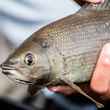
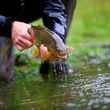





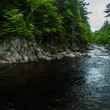
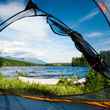



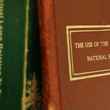
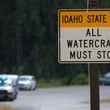



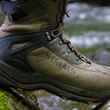
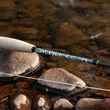



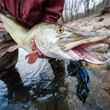
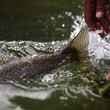
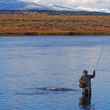
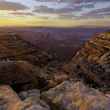
Comments
Jake M replied on Permalink
Paradise Valley and the SW Montana region are open for business! The Yellowstone River through Paradise Valley and to Livingston will be fishing great here very soon. These hard hit communities are going to need tourist dollars and support more than ever!
Chad Shmukler replied on Permalink
Chris Hunt replied on Permalink
As noted in the article. Thanks!
Grant Grigsby replied on Permalink
Obviously you need to amend your article as Montana FWP had reopened the Yellowstone for recreational use. The Stone will be fishable within a week or two, and when that happens we will be fishing it. Also, with our current snow pack there is no concern for hoot owl closures, like last year. If you are planning on coming to Southwest Montana this summer to fish, don’t cancel your trip. There will be plenty of fishing to be had.
Chad Shmukler replied on Permalink
Chris Hunt replied on Permalink
Why amend? We pointed out that the river is, indeed, open to fishing in Paradise Valley. Inside the park, where FWP has no jurisdiction, the river is inaccessible because the park is closed.
TroutBum Trading Co replied on Permalink
New title... Salvaging your Stoned fishing trip. As mentioned things are open.. alot of people are suffering and wondering where their tourist paycheck will come this summer. Stop spreading rumors and become part of the solution not just adding to the problem!!!
Chad Shmukler replied on Permalink
TroutBum Trading Co replied on Permalink
Here's the proper information free updated daily by MT FWP..
It's bad business to put other people out of business...
Zillion other things to write about for your rag.. let the Pros handle this one next-time
Chad Shmukler replied on Permalink
Your link was an internal email link that failed to direct readers to wherever you intended it to direct them. Please feel free to repost.
That said, what information in the article do you find inaccurate or take issue with? The northern loop in the park remains closed, and the park service has indicated that they expect it to remain closed for an extensive amount of time. The article suggests numerous alternative destinations for anglers that had trips planned to the fisheries accessed via the northern loop, including the Yellowstone north of Gardiner outside the park, including Paradise Valley.
Furthermore, what does Montana FWP have to do with Yellowstone National Park closures?
Chris Hunt replied on Permalink
What's incorrect? That the Yellowstone is open in Paradise Valley? As noted in the article? Or that fishing on the southern loop is open? As noted in the article? Inside the park, which is closed, the Yellowstone, Gardner and Lamar are inaccessible (and not subject to FWP jurisdiction, anyway) and not available to anglers. Again ... what's the error? This "rookie" wants to know...
Chris Hunt replied on Permalink
Rumors?
Pages